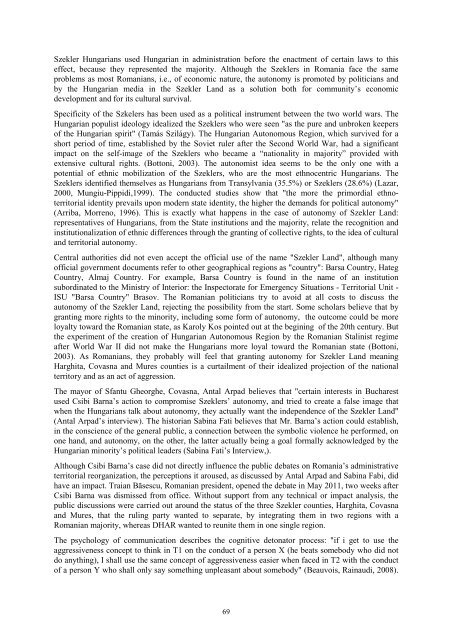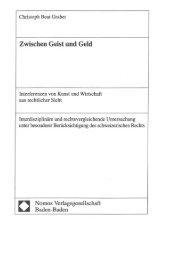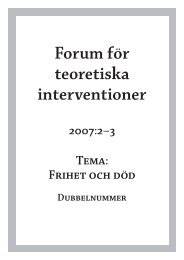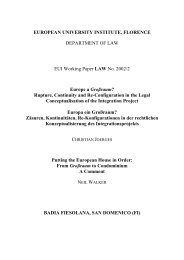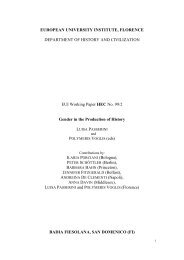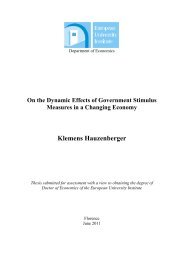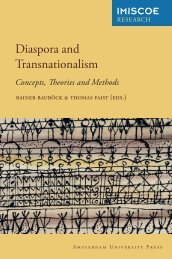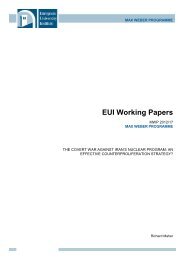Sinziana-Elena Poiana Ioana Lupea Irina-Madalina Doroftei Alina ...
Sinziana-Elena Poiana Ioana Lupea Irina-Madalina Doroftei Alina ...
Sinziana-Elena Poiana Ioana Lupea Irina-Madalina Doroftei Alina ...
You also want an ePaper? Increase the reach of your titles
YUMPU automatically turns print PDFs into web optimized ePapers that Google loves.
Szekler Hungarians used Hungarian in administration before the enactment of certain laws to this<br />
effect, because they represented the majority. Although the Szeklers in Romania face the same<br />
problems as most Romanians, i.e., of economic nature, the autonomy is promoted by politicians and<br />
by the Hungarian media in the Szekler Land as a solution both for community’s economic<br />
development and for its cultural survival.<br />
Specificity of the Szkelers has been used as a political instrument between the two world wars. The<br />
Hungarian populist ideology idealized the Szeklers who were seen "as the pure and unbroken keepers<br />
of the Hungarian spirit" (Tamás Szilágy). The Hungarian Autonomous Region, which survived for a<br />
short period of time, established by the Soviet ruler after the Second World War, had a significant<br />
impact on the self-image of the Szeklers who became a “nationality in majority” provided with<br />
extensive cultural rights. (Bottoni, 2003). The autonomist idea seems to be the only one with a<br />
potential of ethnic mobilization of the Szeklers, who are the most ethnocentric Hungarians. The<br />
Szeklers identified themselves as Hungarians from Transylvania (35.5%) or Szeklers (28.6%) (Lazar,<br />
2000, Mungiu-Pippidi,1999). The conducted studies show that "the more the primordial ethnoterritorial<br />
identity prevails upon modern state identity, the higher the demands for political autonomy"<br />
(Arriba, Morreno, 1996). This is exactly what happens in the case of autonomy of Szekler Land:<br />
representatives of Hungarians, from the State institutions and the majority, relate the recognition and<br />
institutionalization of ethnic differences through the granting of collective rights, to the idea of cultural<br />
and territorial autonomy.<br />
Central authorities did not even accept the official use of the name "Szekler Land", although many<br />
official government documents refer to other geographical regions as "country": Barsa Country, Hateg<br />
Country, Almaj Country. For example, Barsa Country is found in the name of an institution<br />
subordinated to the Ministry of Interior: the Inspectorate for Emergency Situations - Territorial Unit -<br />
ISU "Barsa Country" Brasov. The Romanian politicians try to avoid at all costs to discuss the<br />
autonomy of the Szekler Land, rejecting the possibility from the start. Some scholars believe that by<br />
granting more rights to the minority, including some form of autonomy, the outcome could be more<br />
loyalty toward the Romanian state, as Karoly Kos pointed out at the begining of the 20th century. But<br />
the experiment of the creation of Hungarian Autonomous Region by the Romanian Stalinist regime<br />
after World War II did not make the Hungarians more loyal toward the Romanian state (Bottoni,<br />
2003). As Romanians, they probably will feel that granting autonomy for Szekler Land meaning<br />
Harghita, Covasna and Mures counties is a curtailment of their idealized projection of the national<br />
territory and as an act of aggression.<br />
The mayor of Sfantu Gheorghe, Covasna, Antal Arpad believes that "certain interests in Bucharest<br />
used Csibi Barna’s action to compromise Szeklers’ autonomy, and tried to create a false image that<br />
when the Hungarians talk about autonomy, they actually want the independence of the Szekler Land"<br />
(Antal Arpad’s interview). The historian Sabina Fati believes that Mr. Barna’s action could establish,<br />
in the conscience of the general public, a connection between the symbolic violence he performed, on<br />
one hand, and autonomy, on the other, the latter actually being a goal formally acknowledged by the<br />
Hungarian minority’s political leaders (Sabina Fati’s Interview,).<br />
Although Csibi Barna’s case did not directly influence the public debates on Romania’s administrative<br />
territorial reorganization, the perceptions it aroused, as discussed by Antal Arpad and Sabina Fabi, did<br />
have an impact. Traian Băsescu, Romanian president, opened the debate in May 2011, two weeks after<br />
Csibi Barna was dismissed from office. Without support from any technical or impact analysis, the<br />
public discussions were carried out around the status of the three Szekler counties, Harghita, Covasna<br />
and Mures, that the ruling party wanted to separate, by integrating them in two regions with a<br />
Romanian majority, whereas DHAR wanted to reunite them in one single region.<br />
The psychology of communication describes the cognitive detonator process: "if i get to use the<br />
aggressiveness concept to think in T1 on the conduct of a person X (he beats somebody who did not<br />
do anything), I shall use the same concept of aggressiveness easier when faced in T2 with the conduct<br />
of a person Y who shall only say something unpleasant about somebody" (Beauvois, Rainaudi, 2008).<br />
69


